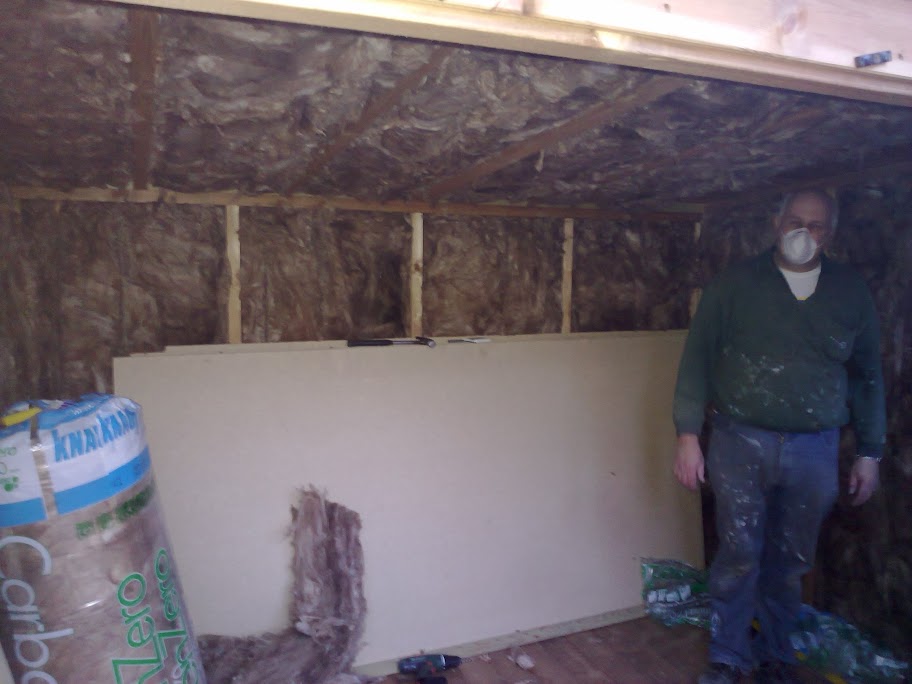Hi DJH,
This is a very interesting thread on a subject right up my alley... and one that I have had similar experiences with. I am a building scientist/designer and I have over 20 years experience in moisture management and mitigation.
My father-in-law has half of his shop in a covered carport area which he enclosed, my business partner has his shop in his detached garage and much of my own equipment has been kept and used in an attached garage. Our spring and fall are very close in climate to the south of wales in the winter.
You need to take a multiple strategy approach to dealing with moisture issues. If you allow the shed environment to be at equilibrium with the exterior environment it is a formula for disaster, over time most of the strategies discussed on this thread so far will fail to provide long term protection of your equipment.
The trick is to provide minimal control over the interior environment that is sufficient to bring the temperature and relative humidity within a range that will result in a dewpoint well below the temperature at which the equipment is normally maintained. So you need to provide some humidity control, and some temperature control.
It would be cost prohibitive to provide a major retrofit of your shed, however some minor low cost detailing can be very effective at managing the moisture infiltration. Some of which is due to vapour drive, especially from the floor system over the gravel pad upon which the shed sits. This type of construction is extremely susceptible to moisture vapour drive from the ground upwards into the structure. A simple moisture barrier will fix this. You don't need expensive paint, just look for a moisture barrier rated latex primer. Do the walls as well then finish with another coat of regular paint to protect the primer from wear.
Next address the moisture load that enters the shed from air infiltration... simply check that the shed is well caulked, and providing good weatherstripping on the doors and windows. If you don't slow the infiltration of moisture from outside the shed dehumidification will not help since the moisture load from outside air leaking into the shed will exceed the small capacity of the typical dehumidifier. So if you cannot slow air leakage do not bother with the dehumidifier.
However, I doubt this alone will provide totally adequate protection... because on rainy days the humidity and temperature combination will likely result in much of your equipment being at or below the dew point.
It is great that you are heating the equipment. Radiant heat is the best way to heat since it heats the mass of equipment directly and most efficiently... electric baseboard does not provide true radiant heating since it relies mostly on creating convection air currents to circulate the heat. Infra-red tube style heaters are best for a shop environment and cover a lot of territory.
I don't think you have enough heat to maintain the temp of your equipment above the dew point for those days colder than 12° C, even in the conditions you describe where the mill feels warm and you cannot feel moisture on the equipment, there is a high risk.
See image 1...
You will see from the chart that the RH is too high resulting in a dew point that is too high and potential risk for metal corrosion. To provide adequate protection you need more heat into the equipment and lower humidity both.
Circulation helps by helping evaporate any slight condensation there may be, so covering equipment will impede evaporation when you have some radiant heating. Some air movement is good if it doesn't cost too much to operate.
I did a heat loss calculation for my attached garage and determined that I needed to use two 1.5 KW ceramic radiant heaters with a small fans inside to heat the garage to about 10° C, which is the temperature I need to maintain to lower my RH and dew point enough to prevent condensation for my conditions. I had a plug in power monitor and the heaters averaged about 24kWh a day, which over the course of the heating season cost me over $280 a year to operate. My space was small and attached to my home on three sides and designed to resist moisture infiltration so I had far less moisture to worry about.
My friend with a 20' x 20' detached wood frame garage built in the 1950s required 5.5 KW of heating and therefore uses a natural gas fired infra-red tube heater in order to protect his equipment. The capital costs were higher but the operating costs were far less. Electricity would cost him $1500 a season, while gas only costs him $800.
Of course, my friend uses his shop all the time, and doesn't heat above 15° C. Given his costs he chose to insulate half the space recently and uses tarps to seal off the other half which he doesn't use.
Image two shows the minimum safe level to avoid metal corrosion at 12°, while image 3 shows the minimum safe conditions at 5° C. Image 4 shows the threshold between a safe level and unsafe level of RH... 56%RH is safe, but 58% crosses into unsafe territory... risk of corrosion.
Oh and yes do coat all surfaces of your equipment with a preservative designed specifically for protection from moisture... good suggestions have already been given here, so I wont add to this.









